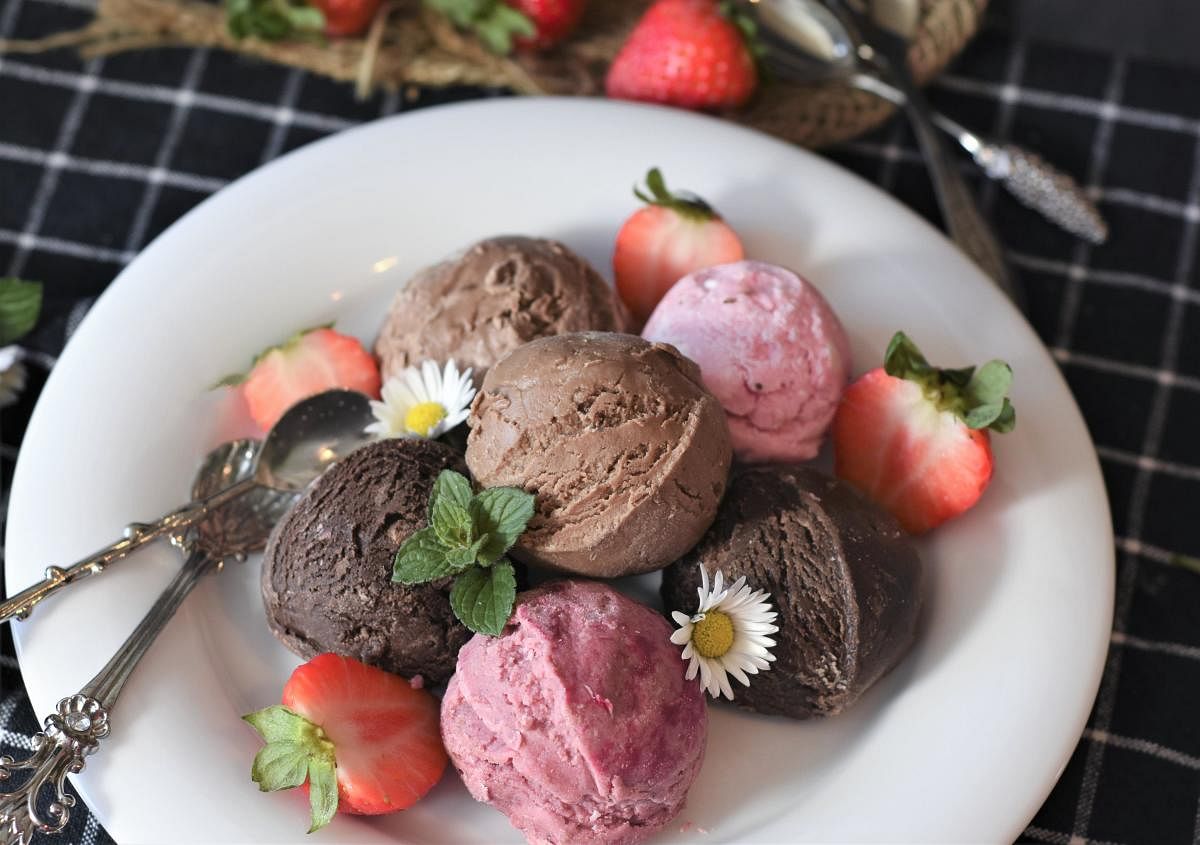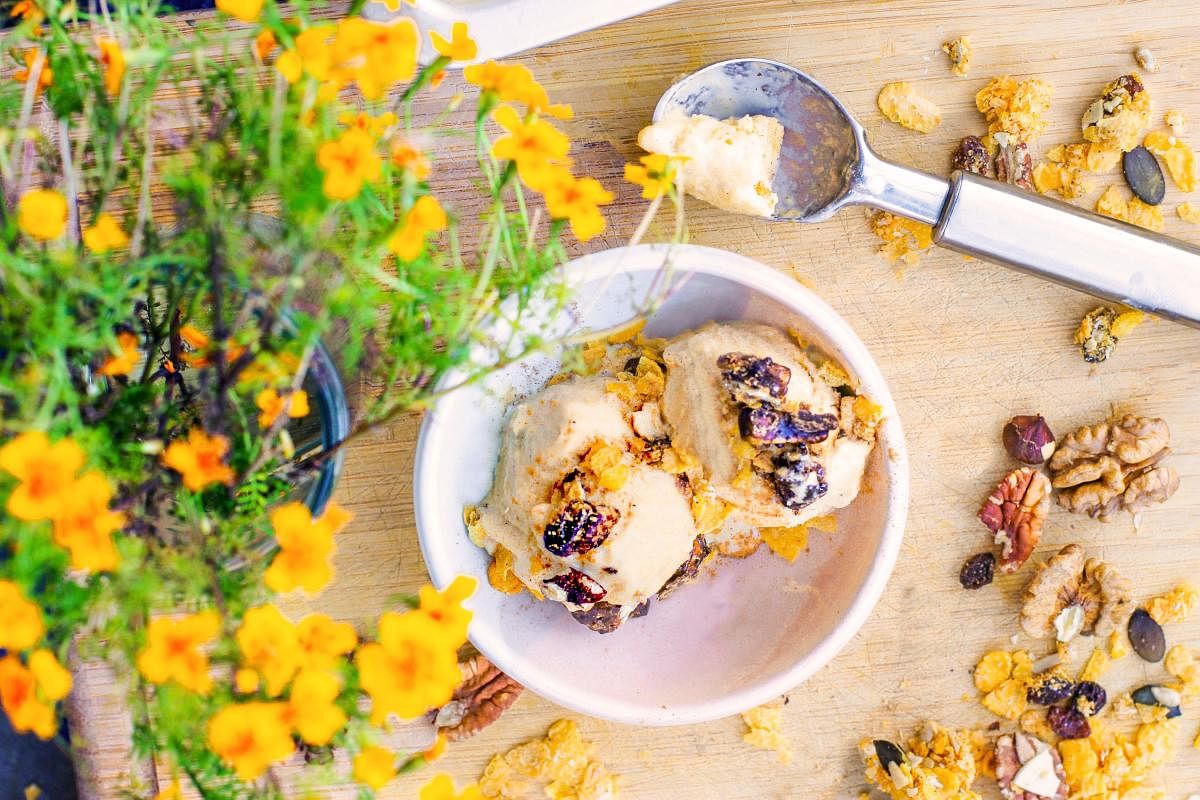

Ice cream making has a history of its own. In a time when we did not have innovative ice cream makers, we used to use the traditional endothermic process (a chemical reaction that produces cooling) for making ice creams. The ingredients for ice cream such as milk, sugar, and flavourings are all added to a metal container, which is then placed inside another metal container filled with ice and salt. This is done because the simple act of adding salt to ice makes the ice colder. So, any substance packed around a vessel of salty ice also gets colder and moves to a frozen state. Back in the day, it was a costly affair to have ice cream because to make ice cream we needed ice and not many countries enjoyed cold winters. So, people had to get glacier ice or snow from high mountains, store it in ice houses or put out vessels to freeze water where it would freeze at night. The time and effort to acquire this natural resource made it something that only the wealthy could afford. The actual origin of ice cream is still a mystery but history has recorded that China had ice cream-like dishes served during the Tang dynasty. The dish was made with milk, flour and camphor. Later in 200 BC they made a dish resembling ice cream by freezing a mixture of milk and rice by packing it in snow. In the 16th century when King Akbar the Great reigned India, the world-famous kulfi was created. Around 100 years later the Italians created a frozen dessert called sorbetto. Ice cream arrived in England from France. And as in mainland Europe, it was a treat that only the upper class could afford. Ice cream was brought to America by European settlers and the rest is history.
Scream for ice cream!
My family will travel to any lengths to taste and relish any kind of cuisine. During our brief stay in London, we got to taste one of the best ice creams we have had by far and it was the handmade Afghan Sheer Yakh. Sheer Yakh simply means frozen milk or cold milk in Dari. It is a traditional Afghan dessert that uses the same ingredients as the Indian kulfi ice cream but is prepared differently. Typical flavourings include cardamom, rose water, and salep (wild orchid powder). A favourite summertime street food, Sheer Yakh is usually served in small bowls and topped with chopped pistachios, almonds, and thick cream. We would crave this dish and relish it even at minus-degree temperatures. This ice cream was special in many ways as it was very subtle in its sweetness and flavour quotient. The subtle rose flavour topped with crushed pistachios and served like a tower was what made this one special. To prepare the Sheer Yakh, a copper vessel is placed over a bed of ice, the ice cream mix is then poured into this vessel and one needs to keep churning unless the milk mixture solidifies and turns into ice cream. This requires a lot of muscle power. When we were back home from London, I began to miss this flavour of ice cream. I bought an ice cream maker which uses a similar concept and it turned out to be well worth an investment.
Sheer Yakh
Ingredients
Milk: 200 ml
Fresh cream: 200 ml
Honey as per taste.
Few drops of rose essence if you want the ice cream white or rose milk essence can be added for a hint of pink.
Crushed pistachios for topping.
Cardamom powder is optional.
Method
Place the ice cream bowl of the ice cream maker in the freezer.
Mix all the ingredients and pour them into the cold ice cream bowl.
You can do the same without an ice cream maker by churning the
ingredients in an ice-cold bowl and freezing the mix for 2 hours.
Repeat the process once more.
Top the frozen Sheer Yakh with
crushed pistachios.
(Recipe courtesy Padmashree Palavalli.)
One ingredient, one recipe
This column celebrates food and explores the possibility of forming an invisible chain that will bind us together as a family. Readers can send us a unique recipe that has either a childhood memory attached to it or even a food philosophy. We will hand-pick one unique recipe and publish it along with this column the following month. Please share your heritage recipe and story in 300 words with “Food Family: Love” mentioned in the subject line to dhonsunday@deccanherald.co.in by Aug 8.